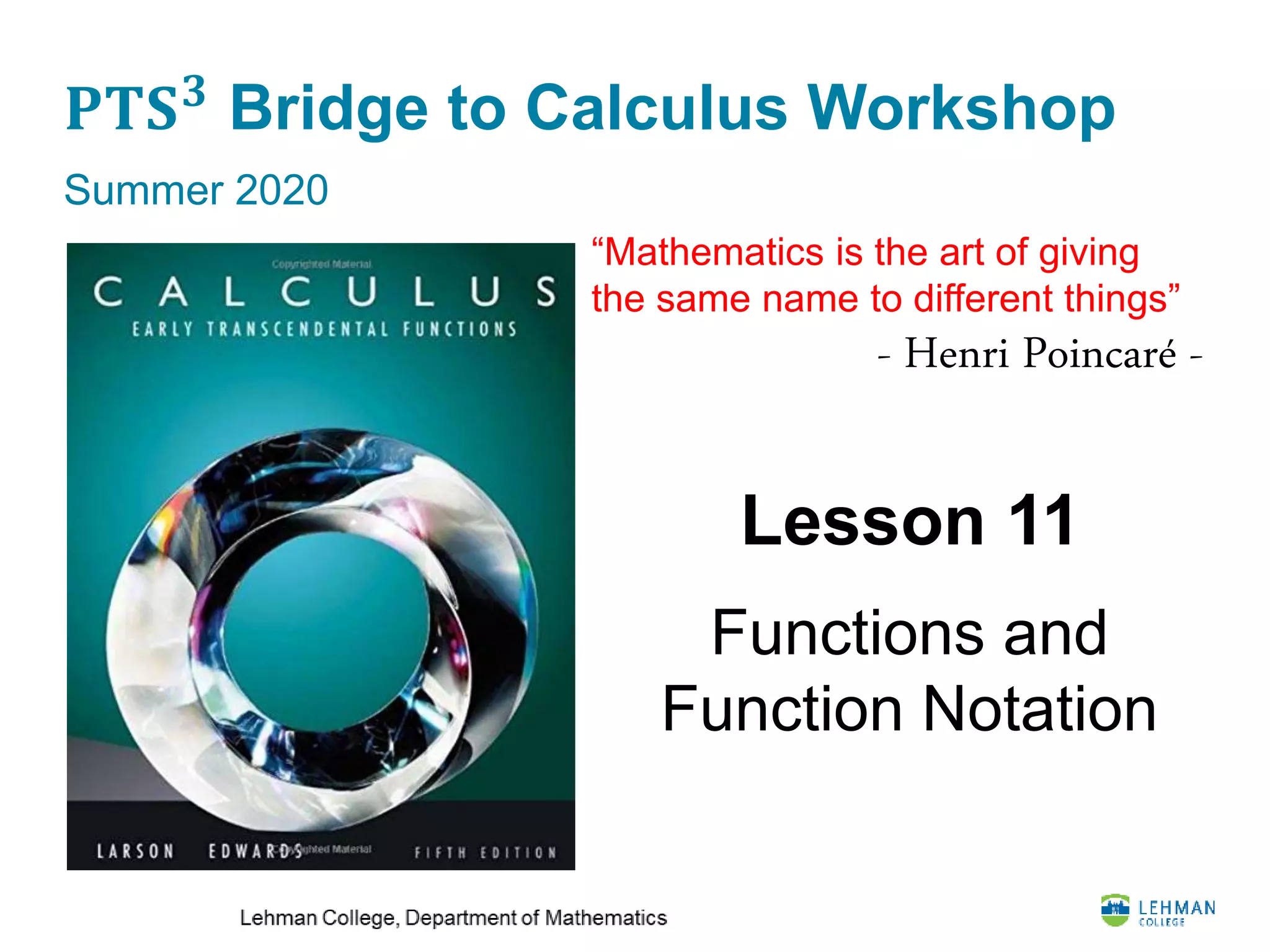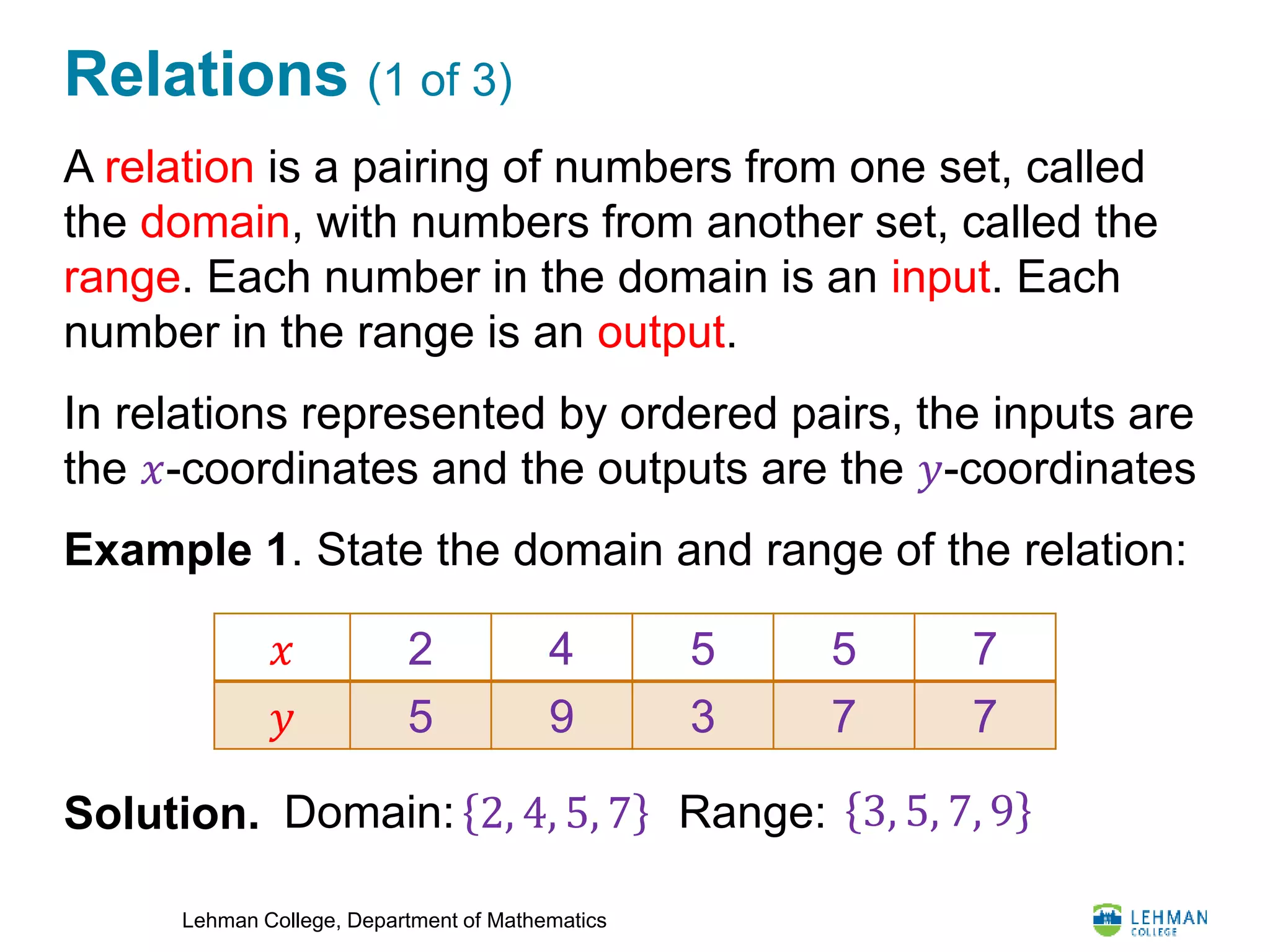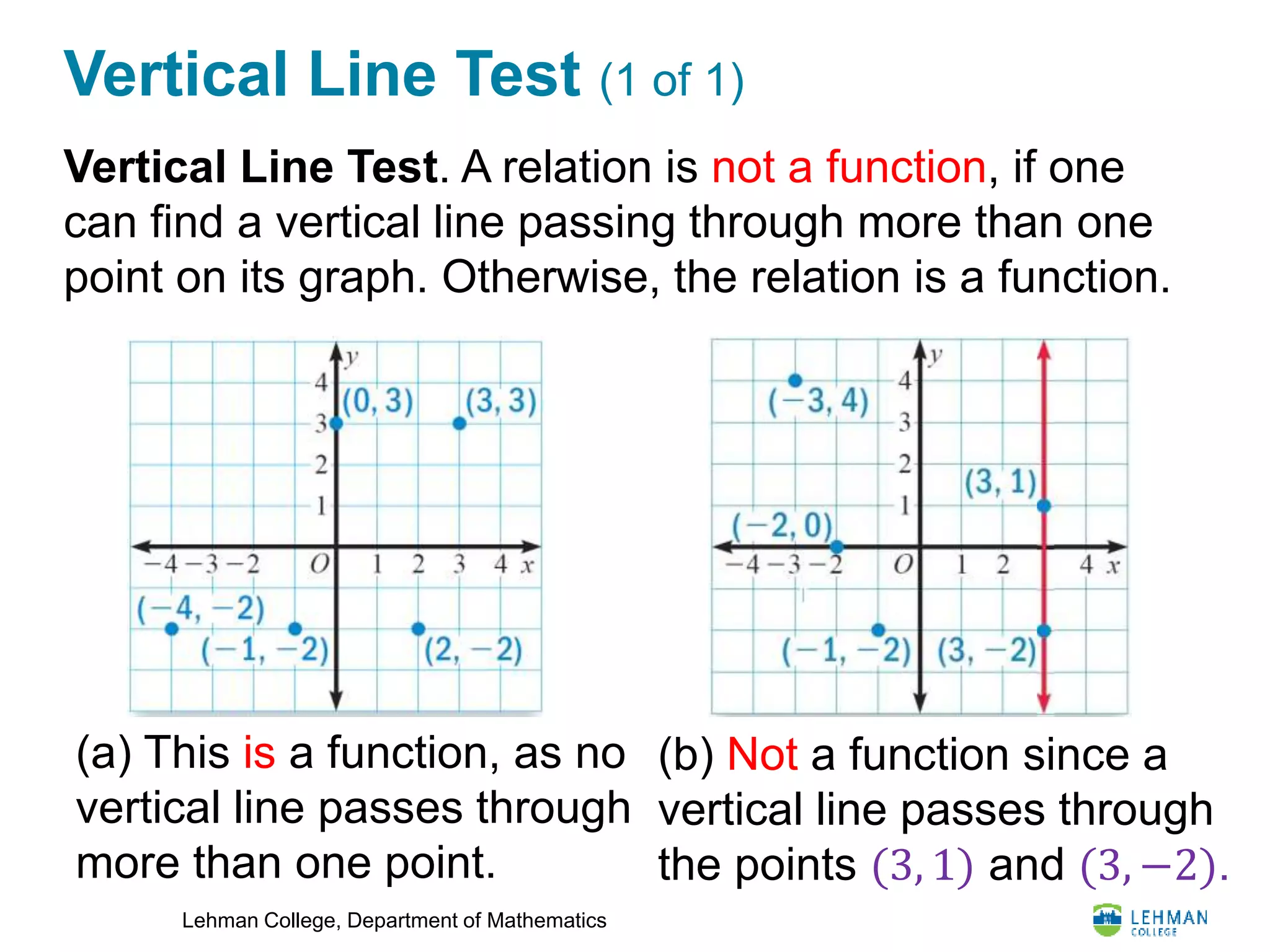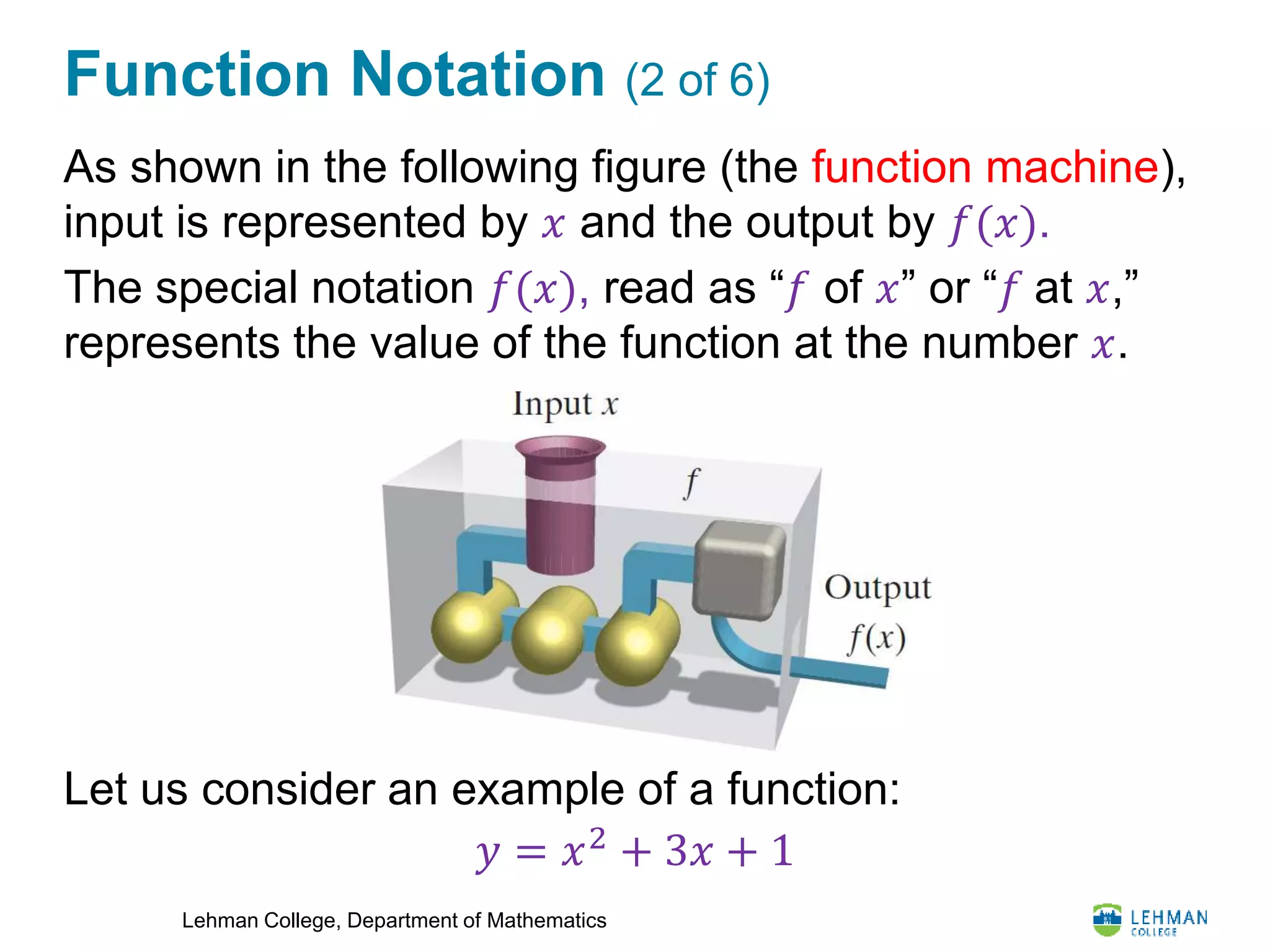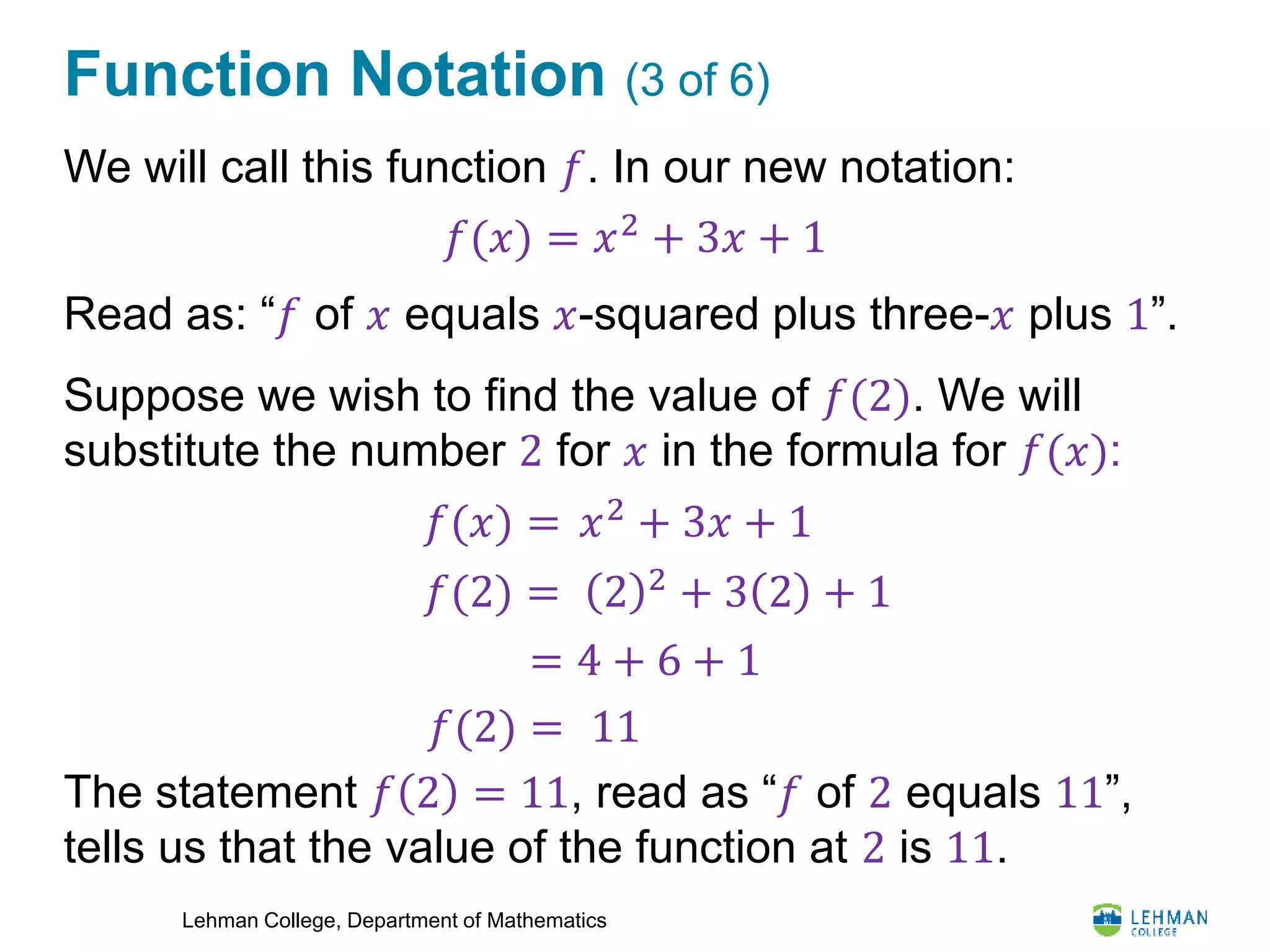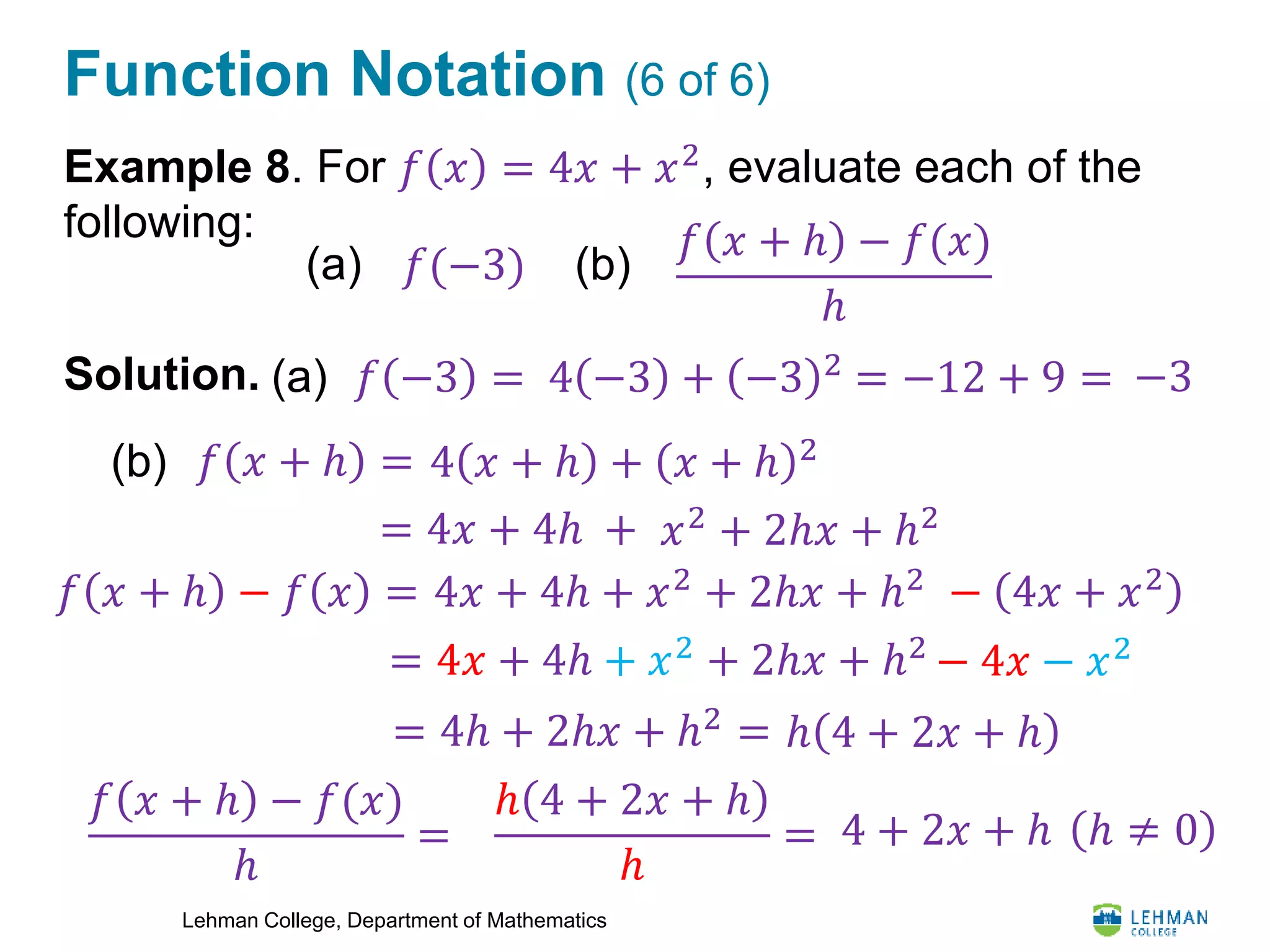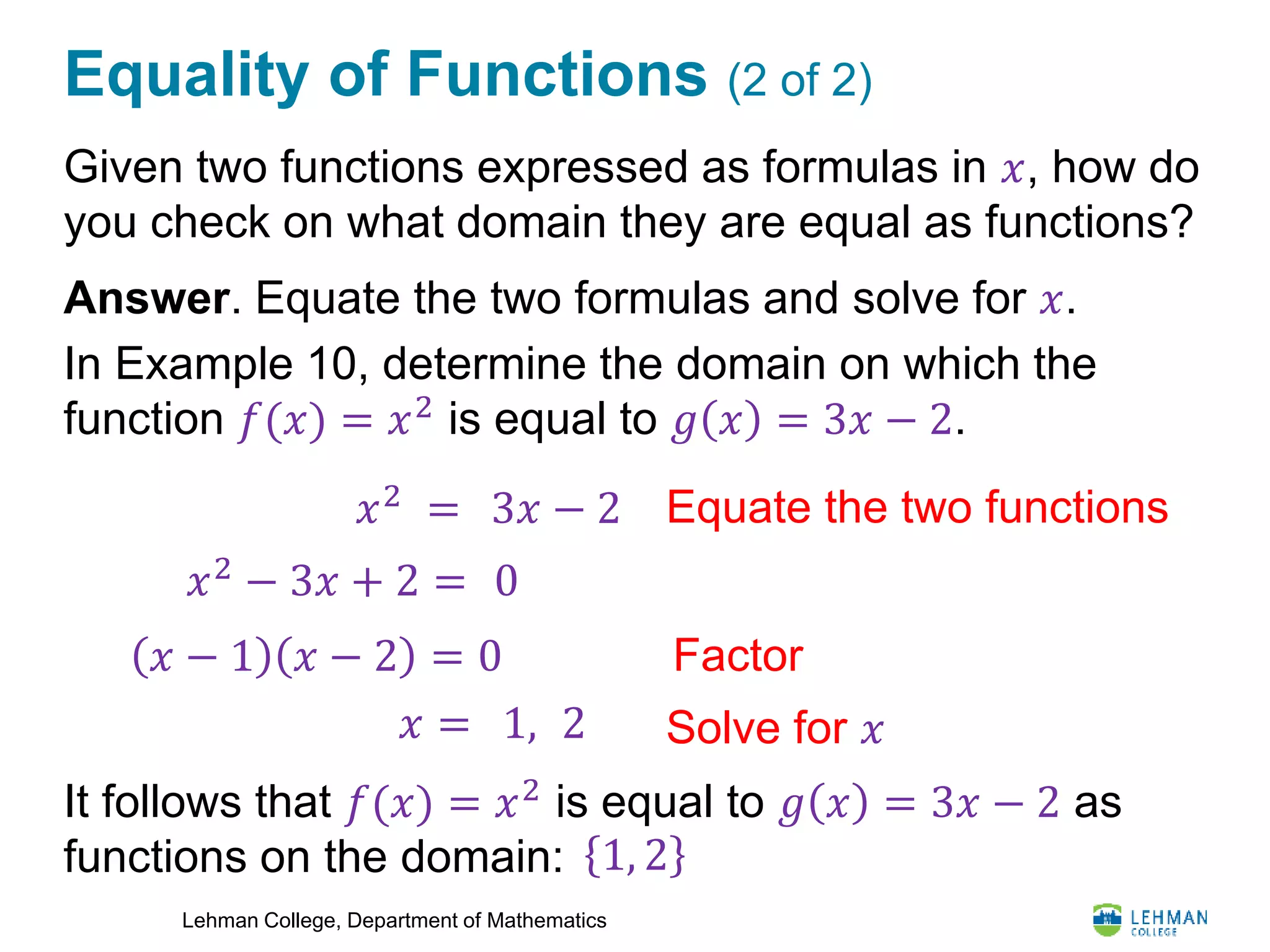This document discusses functions and function notation. It defines a function as a relation where each input has exactly one output. Functions are represented using functional notation f(x) where f is the name of the function and x is the input. The domain of a function is the set of all possible inputs, and the range is the set of all possible outputs. A relation is not a function if one input has more than one output. The natural domain of a function is the set of inputs that make the function definition valid.
